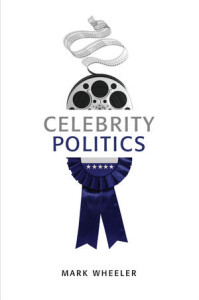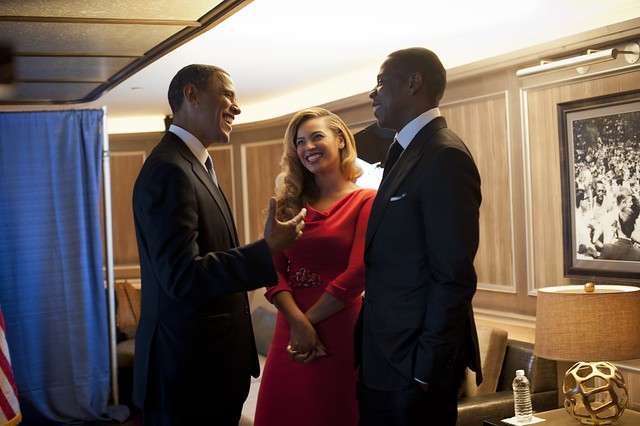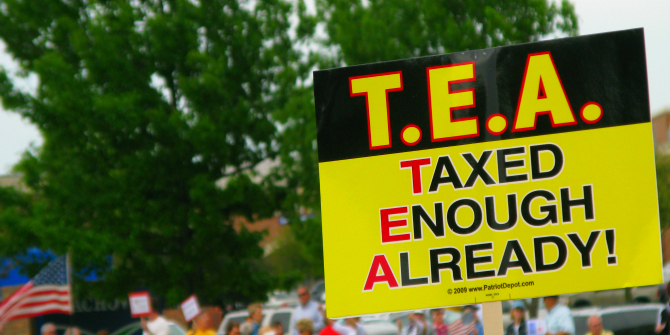 In Celebrity Politics, Mark Wheeler offers an analysis of the ways that celebrity politicians and politicized celebrities have had an impact upon the practice of politics. New forms of political participation have emerged as a result and the political classes have increasingly absorbed the values of celebrity into their own PR strategies. Celebrity activists and humanitarians also play a part in reconfiguring politics for a more fragmented and image–conscious public arena. Hansley A. Juliano encounters some theoretical weaknesses but believes the book remains useful for students of political communication.
In Celebrity Politics, Mark Wheeler offers an analysis of the ways that celebrity politicians and politicized celebrities have had an impact upon the practice of politics. New forms of political participation have emerged as a result and the political classes have increasingly absorbed the values of celebrity into their own PR strategies. Celebrity activists and humanitarians also play a part in reconfiguring politics for a more fragmented and image–conscious public arena. Hansley A. Juliano encounters some theoretical weaknesses but believes the book remains useful for students of political communication.
 Celebrity Politics: Image and Identity in Contemporary Political Communications. Mark Wheeler. Polity Press. June 2013.
Celebrity Politics: Image and Identity in Contemporary Political Communications. Mark Wheeler. Polity Press. June 2013.
Communication and political discourse have been marked by the seemingly-inevitable onslaught of image-building, packaging, and advertising as a general trend. It is now the norm in many emerging and established democracies worldwide for celebrities, actors, and many non-traditional public figures to become speakers on behalf of political causes. In turn, political groups, be they individuals, families or movements, appreciate and contend with the unquestionable power of celebrity glamour in drawing partisans and advocates to their causes. Whether it’s Jay Z supporting Obama’s vision for the US, Wyclef Jean hoping to run for president of Haiti, or Joanna Lumley campaigning for the rights of former Gurkha soldiers, it seems that celebrities are making a mark on politics at all levels.
These contemporary configurations of power relations inform Mark Wheeler’s recent work, Celebrity Politics. In asking how and why the notions of celebrity and political action overlap and interact, his work looks at their origins, development, and continued usage in domestic, international, and global political struggles. While the work is a remarkable contribution to the study of political activity and communication, it does leave the reader with many more pressing questions than answers.
Wheeler’s book begins with a review of the increasing significance of celebrity involvement in public dynamics and the transmission of ideas (Chapter 1). Competing theories largely revolve around a certain debate: whether the presence of celebrities in political discourse dilutes and renders superficial any sense of political urgency, or whether they in turn infuse transformations on currently-rigid formal structures of participation. For his part, Wheeler tries at explaining this picture more clearly.
Movie and television stars, acknowledging the need to connect with their audiences on multiple levels, take it upon themselves – or perhaps are advised – to become representatives of what they perceive to be issues of interest to the public. Since politicians now compete with these new forms of affiliation and expression, they are challenged to appeal to an electorate whose ideals are no longer expressed in communal forms of association, but more significantly aligned along patterns of consumption. These dynamics, it has been argued, can be symptomatic of current transformations in the practice of formal representative democracy, which is being challenged by “a discursive form of political activism in which solidarity exists but is not tied to any notion of the common good or a particular ideology” (p.15).
Wheeler suggests a typology summarizing the current literature on the uses of celebrity in political projects, involving CP1s: “celebrity politicians that employed marketing techniques to achieve electoral office”; and CP2s: “politicized celebrities [that] utilized their fame as a form of political capital to endorse candidates or propagate partisan ideologies” (p.60-61). Chapters 3-4 illustrate how “celebrity politicians” or CP1s, by virtue of the necessity of capturing an audience, exhibit propensities to multiple forms of “reaching out” to their respective electorates. They are, in a way, easily maneuvered into being viewed as a very likable, accessible, and more often than not “progressive” alternatives to traditional, formalistic and institutional status quo politicians.

Such a project, however, does not guarantee sure-fire results. It does not only require that a politician becomes savvy in the deployment of resources to the creation of an electorally-palatable image, but it requires, more significantly, that the image is substantiated and translatable to political action points.
The contrasting usage of CP1 tactics between the campaigns of then-Democrat Senator Barack Obama and then-Republican Governor Sarah Palin (as has been discussed at length in Simon Critchley’s lecture “Barack Obama and the American Void”) are illustrative of an important point: promoting a celebrity image can (and will) indeed backfire if relied upon too much to generate public appeal (p.89-97; p.106-110). More significantly, attempts by politicians to radically change their images without any obvious transition are almost always bound for negative effects. The dismal showing of former British Labour Prime Minister Gordon Brown against the coinciding onslaughts of the Conservatives’ David Cameron and the Liberal Democrats’ Nick Clegg (p.97-104) shows this.
By comparison, “politicized celebrities” or CP2s are either pushed by their specific biases and concerns to support politicians and causes, or are in turn vying for formal political office themselves. Their long-confirmed power and authority to an electorate, primarily subject to image-building, (its genesis and development borne out significantly in Chapter 2) has become practically institutionalized over the decades. As the discussions in Chapters 5 and 6 show, it is not a long stretch of the imagination that they will eventually choose to take on politicized identities themselves — illustrating the nexus of willingness-to-expression among celebrities themselves. Indeed, elected celebrities, exemplified in the case of Arnold Schwarzenegger, and celebrity activists like Brad Pitt and Angelina Jolie, are becoming normalized. All the same, their limitations in actively understanding the issues they claim to represent are nonetheless still visible, which hampers their credibility and sustainability as political agents.
Wheeler’s work, filled to the brim with detailed historical developments and contemporary usage of societal dynamics, is indeed to be appreciated in illustrating how the politico-celebrity nexus has evolved and is institutionalized. However, the book is still limited in detailing how these forces contribute to the development of social, political and economic aesthetics, apart from its cursory review of existing perspectives on the topic. The study’s focus on Northern Hemisphere cases, which while understandable given its audience, does somewhat limit its applicability (considering its desire to illustrate even changing global and transnational developments on this respect). The forms of celebrity and the responses affiliated to them are made largely possible by so-called “developed” societies whose basic civic and political rights are already non-debatable. This does not exactly correspond to dynamics of countries in the Global South, where the continuing fluidity of authority and public spaces made possible by national governments lacking in capability and credibility (a phenomenon I am personally familiar with in the Philippines).
Nevertheless, as a starting point for students and instructors of political communication, campaign strategists, and social movements, this book is an excellent introduction. Further studies and strategies may, hopefully, evolve from the CP1 and CP2 concepts Wheeler has introduced. More significantly, while a general reader might not be so interested in the typology, they would find the narratives very useful for deconstructing any and every celebrity bandwagon that comes their way.
————————————————————
Hansley A. Juliano graduated this 2013 with a Master of Arts in Political Science, major in Global Politics, from the Ateneo de Manila University. An independent researcher and former student journalist, he is a part-time lecturer in the Department of Political Science in the same university. His research interests include socio-political movements, political and economic development, as well as the changing contours of studies in literary criticism, history and philosophy. Read more reviews by Hansley.








1 Comments